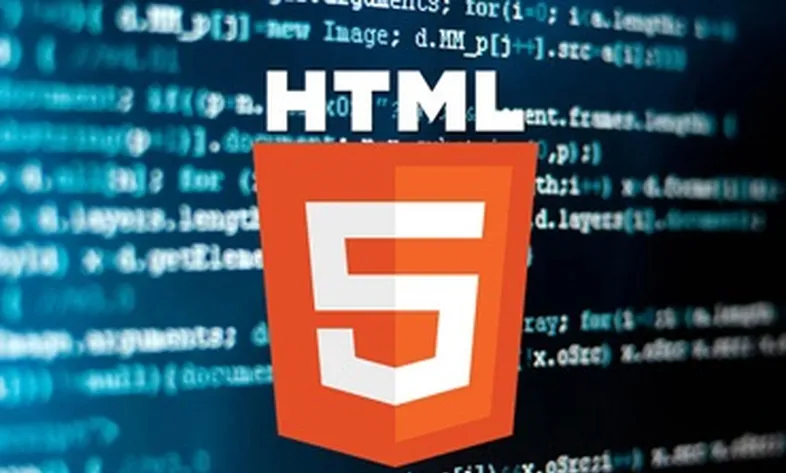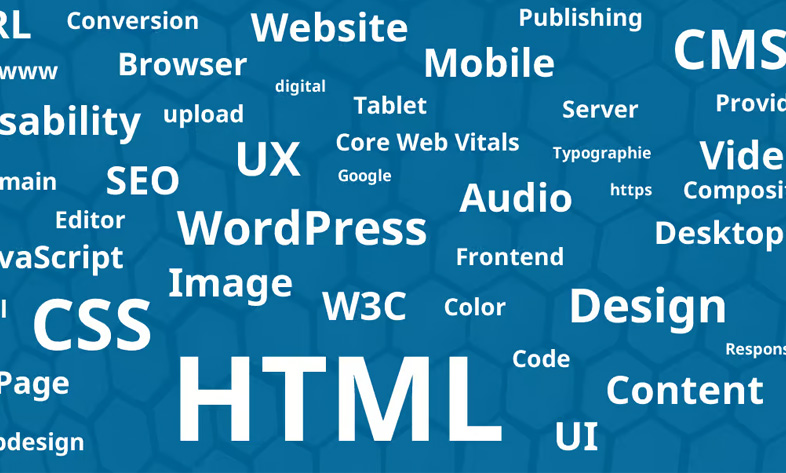Guide to Setting Up Website Email on Mobile and Computer
Follow the guide to set up your domain email on any device or OS, including both smartphones and computers, quickly and easily.

What is HTML? HyperText Markup Language (HTML) is a markup language for designing web pages.
What is HTML? stands for HyperText Markup Language. Along with CSS, it is the core technology for creating web pages. We are going to examine it on itroz. Stay tuned with us.
HyperText Markup Language (HTML) along with CSS are the core technology for creating web pages.
HTML is a language for describing the structure of web pages.
It is a hypertext markup language used to format and design web pages.
The instructions in this language are called tags, which mark up the content of a web page and thus describe how that page should be displayed to web browsers.
This language was invented by Dennis Ritchie during the 90s. So far, version 5 has been released.
HTML consists of a set of tags, and each HTML tag has a specific meaning and effect on the content; for example, tags are defined in HTML to change the appearance of text, such as making a word bold or making links to other pages.
These tags are updated as web pages evolve, and some of them become obsolete.
An HTML document is a text-based file, usually with the extension .
It is named .htm or .html and its contents consist of HTML tags.
Web browsers, which are capable of understanding and interpreting HTML tags, read each one from within the HTML document and then render the content of that page.
HTML is not a programming language, but rather a hypertext markup language, and is primarily used to structure information and separate logical components of a document—such as headings, images, lists, paragraphs, and tables.
On the other hand, HTML should not be used as a language for layout or drawing web pages; this task is now the responsibility of other technologies such as CSS.
It is worth noting that HTML is a form of another language called SGML, and the World Wide Web Consortium has developed it as a standard for marking up hypertext documents for presentation on the Web.
We have reviewed what HTML training is and all the information related to HTML coding in this article and published it for those interested in coding and website design.
Join us in learning HTML.
What is HTML coding language? What are its uses in website design and user interfaces of different platforms?
Complete explanation about HTML.
HTML stands for Hyper Text Markup Language.
And in general, we can say that HTML coding is the basic language of all websites.
The core of all websites is written in the HTML coding language, and if you are familiar with web design and programming, you have probably heard the word HTML.
From the past to the present, the HTML coding language has undergone many changes, which we will examine below.
Today, with the widespread use of smartphones and the Internet, there is hardly anyone who does not have access to cyberspace and has not surfed the Internet.
After reviewing various sites on the Internet, you may have wondered how these sites are designed and how web pages can be designed.
Or what is behind these pages? Our question is related to the article because HTML codes are one of the oldest elements in website design, which you will learn about by studying the history of website design.
This has been the mission from the past to the present, and HTML pages continue to form the main pillar of websites, but there have been some changes since then, which we will examine.
HTML is actually a standard markup language for creating web pages, and it is considered one of the key elements of web pages, and all web programming languages are supported by Linux.
Whether Windows or not, they are all HTML-dependent and are formed through this coding language and CSS, JavaScript, and basic World Wide Web technologies, of course, other features can be added to it.
Those who are interested in website design, whose first step is to review the HTML code and sometimes its.
If you want to work in the field of web design, Sequar recommends a thorough study of basic technologies such as HTML, CSS, and JavaScript.
So, study these three items carefully as the first step in website design.
The first question you may be wondering is what is the difference between a markup or coding language and a programming language, which we will discuss below.
It may be a little early to fully understand this, but it's on everyone's mind to know how a coding language differs from a programming language.
As you know, HTML is a coding language, and if we want to have a proper understanding of this, we must first divide the website into two parts.
The part whose information is visible to the user is called the front end, and the part whose information is not visible to the user is called the back end. The general difference between these two parts is that the back end part needs to read information from the server for each execution.
But the front-end part reads the information from the server only once and displays the same information to the user for subsequent displays, which will be explained in detail in other articles.
But HTML coding is defined in the front-end section, the part that is visible to the user.
So, as a user, you can view the HTML code through the browser's view page source.
But in programming, for example, PHP, its codes are not visible in the browser, and if you have access to the original source, you can view its information.
Another difference between coding and programming is how they work. For example, HTML codes only represent and specify the components of the page.
But in programming, you can base commands on different functions and outputs.
For example, in PHP programming, you can multiply two numbers and display the output as HTML code, but you cannot multiply two numbers through HTML code.
Before providing further explanations about HTML coding, it is better to provide some information about its history to help you better understand this hypertext markup language.

HTML has been used since 1991 and was first put on the Internet that year by a physicist named Mr. Tim Burns-Lee, a contractor for CERN, who provided a version of HTML Tags.
Of course, Mr. Tim Burns-Lee had been working on this project since 1989 until he succeeded in putting his project on the Internet in 1991.
HTML initially had a relatively simple design and consisted of 13 basic elements. Over time, 11 of its components were written into HTML 4.
Mr. Tim Burns Lee used HTML as a tool for SGML, generally defining it as the command of the Internet Engineering Task Force.
In 1993, the initial versions were introduced based on HTML, but it expired after six months. Therefore, in late 1993, Mr. Tim Burns-Lee proposed an implementation structure such as tables and fillable fields to present the Internet-Draft, HTML+ (Hypertext Markup format).
Initially, HTML was introduced as a simple language for creating web pages that used only basic tags and features such as headings, paragraphs, and links.
But over time, the need for more advanced features for designing websites was felt, and HTML became a powerful and versatile language with the addition of new features and various updates.
One of the great things about HTML is its compatibility with all different programs and devices.
This language is fully compatible with all browsers and continuously improves the web user experience by adding new features.
Since HTML is a standard language for web design, web programmers and designers need to be familiar with the latest changes and improvements to this language in order to create high-quality and accessible websites.
Source » Itroz Blog

Follow the guide to set up your domain email on any device or OS, including both smartphones and computers, quickly and easily.

This guide is useful for automatically forwarding your website emails set up on your domain to other email accounts, such as Gmail and others.

Step-by-step guide to install Thunderbird on macOS; download, setup, and manage multiple email accounts easily and efficiently.

Comprehensive guide to installing Thunderbird on iPhone; download the app, install it, and set up email step by step on your device.
Comments (0)